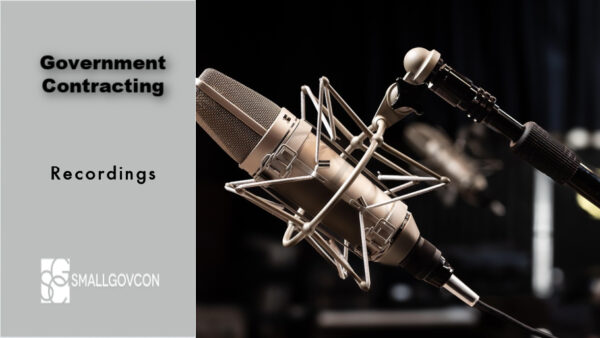The gears of protest resolution at the General Accountability Office have ground to a halt due to the government shutdown but not so long ago, those protest gears were turning. And during that time, GAO sustained the protest of Island Peer Review Organization, Inc., d/b/a IPRO, B-417298.2, 2025 CPD ¶ 218 (Sept. 2025) due to an agency’s insufficient documentation of an evaluation process. What makes this one especially interesting is that getting a sustain on a protest based on inadequate documentation is somewhat rare. When it comes to inadequate documentation, it is more likely an agency takes corrective action, which shields the agency from having to share (under a protective order) source selection information. Or in many cases, if the protest makes it all the way to the comments portion of the protest, GAO finds that an agency did provide sufficient documentation. Read on to learn what it took for this protester to succeed on the inadequate documentation claim.
Continue readingAuthor Archives: SmallGovCon Contributor
SBA OHA: On Second Thought, Managing Venturer Must Still be in Charge of JV
A few months back, we discussed a case at SBA’s Office of Hearings and Appeals that took a closer look at the actions that a Non-Managing Venturer in a small business joint venture is permitted to have negative control over—that is, those actions which the Non-Managing Venturer’s disapproval can block from happening. It also addressed what happens when a joint venture agreement does not include all of the provisions that the SBA rules require for a mentor-protégé joint venture agreement under the SBA’s Mentor-Protégé Program to avoid affiliation. Following that decision, the matter was brought to the Court of Federal Claims. Below, we discuss Multimedia Environmental Compliance Group JV v. United States, 178 Fed. Cl. 129 (2025) which covers the COFC’s review of the OHA decision.
That case reaffirmed that just having required control language in a JV isn’t enough, other provisions in the JVA cannot give inordinate control to the Non-Managing Venturer.
Continue readingOHA: Size Protest Review Must be More Than a Rubber Stamp
As Federated Maritime, LLC, SBA SIZ-6360, 2025 demonstrates, an agency’s review of a size protest must be more than just a surface-level review and a rubber stamp. This size appeal started with a disappointed bidder (here, the Appellant) that questioned the relationship between Schuyler Line Navigation Company, LLC (or Awardee), a company that won two cargo charter contracts, and its alleged affiliates. The contracts were 100% set-aside for small businesses under NAICS Code 483111 – Deep Sea Freight Transportation.
Continue readingSmallGovCon Attorney-Author Stephanie Ellis Discusses Small Business Contracting goals on “The Federal Drive”

I recently had the opportunity to discuss small business contracting goals with Terry Gerton, host of “The Federal Drive with Terry Gerton.” This was a follow-up to a post I wrote in July regarding the changing landscape of federal small business government contracting requirements. That post, published earlier in 2025, focused on the changes to small business federal government contracting goals that had been affected by EO 14151.
Continue readingGAO Report Discusses Potential Reforms for Fee Shifting and Enhanced Pleading Standards in Protests
It’s no secret to anyone that the landscape of federal government contracting has been rapidly changing in recent years. For instance, there have been concerns that mentor-protégé joint ventures under the SBA’s Mentor-Protégé Program have been too successful. More recently, changes have been made to small business contracting goals to reduce the agency level requirements for small disadvantaged business (including 8(a) Program) prime contracts. Today, based on a recent GAO report, we are going to take a look at the current state of GAO bid protests which, if you didn’t know, have been around for nearly a century!
Continue readingBack to Basics: Brand Name or Equal
In some circumstances, it is in the best interest of the government customer to require a specific item made by a specific manufacturer. Though it doesn’t use this technique often, the government can achieve this by soliciting the contract using a “brand name or equal” basis. But the government can’t just decide that it wants a Hoover over a Bissel vacuum. No, there is a process that must be followed, and circumstances must warrant such a requirement.
Continue readingFY2024 Small Business Scorecard Shows Strong Small Business Federal Contracting Numbers
Once a year the SBA publishes its scorecard which rates how well federal agencies have met their small business contracting goals. The purpose? To provide a sense of how strong the federal government’s small business contracting initiatives are performing on an annual basis. And for 2024, the overall federal contracting dollars paid to small businesses looked good. However, the agency-specific numbers were not consistently as promising for small businesses.
Continue reading